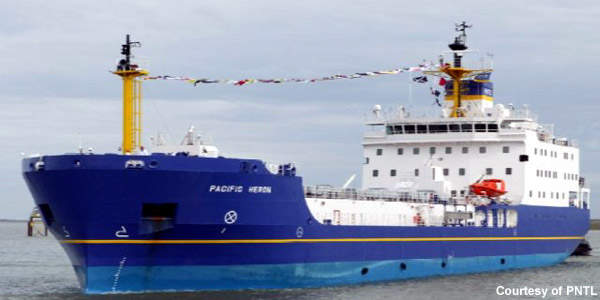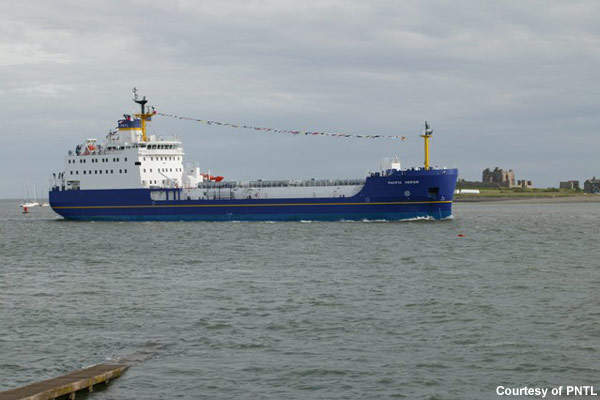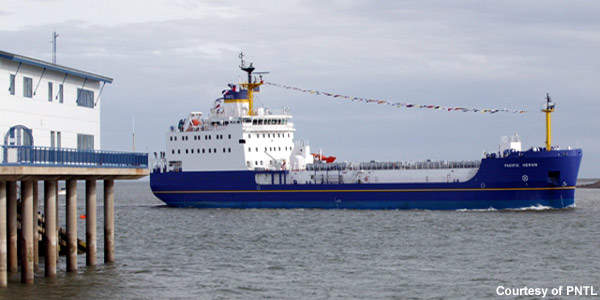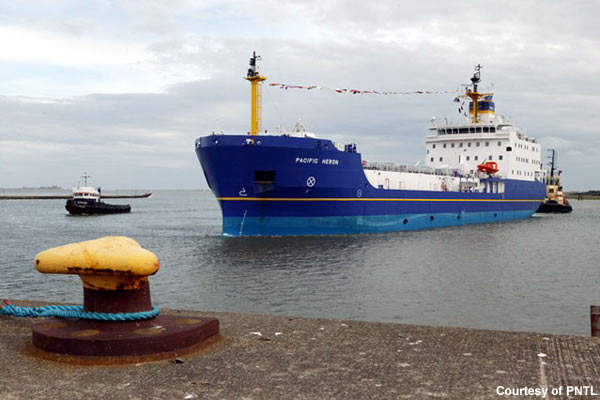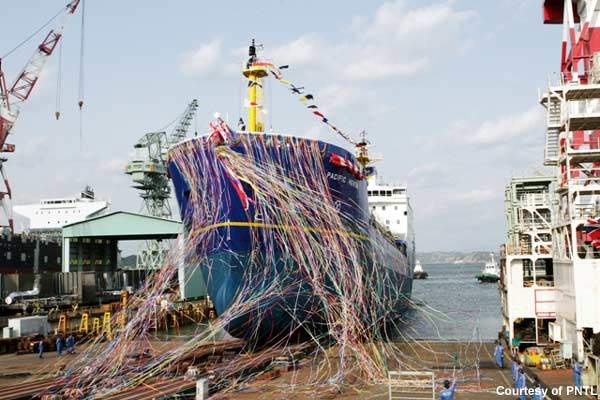Constructed by Mitsui Engineering and Shipbuilding Co Ltd, the Pacific Heron is the first of three new INF 3 purpose-built ships for Pacific Nuclear Transport Limited (PNTL) that will transport nuclear materials between Europe and Japan.
PNTL has made 170 successful shipments in the last 30 years (amounting to some 2,000 flasks being transported). This is the first PNTL vessel built since the Pacific Pintail in 1987.
Construction
The Pacific Heron was built at the Tamano shipyard in Japan and made its maiden voyage in April 2008. The vessel is equipped with state-of-the-art navigation systems, enhanced safety features as well as carrying fixed cannons (it will also carry armed officers of the Civil Nuclear Constabulary).
The design was based on consultation with Lloyds of London and the Salvage Association along with leading salvage companies.
There had previously been five similar nuclear transporters built with cargo compartments protected by a double hull configuration and duplicated essential systems. This practice had already been adopted in 1993 through the International Maritime Organisation’s (IMO) INF Code for shipping nuclear material, which became mandatory in January 2001. The same type of design was followed for the Pacific Heron along with improvements in engine emissions and the handling of shipboard waste.
Mitsui is currently working on two further INF 3 ships which are expected to be in service by early 2011. INS project manager Pauline Woods said: “We recognised that we needed to maintain all the fundamental safety features of the previous design while trying to improve on them where we could. By applying all the accumulated knowledge from hundreds of voyages, together with technological improvements and modern automation, we were able to identify systems that could be made even more reliable.”
Safety features
The Pacific Heron is heavier than the first generation design at 3,775t deadweight and needs more power. However, the twin 2,700kW MAN diesel engines (1,900 hp) burn much cleaner and more efficiently than the older engines.
To avoid oil leakage in the case of collision or grounding, the ship’s fuel tanks are located away from the outer shell and protected by two vertical bulkheads and a double bottom. The engine room is divided by a longitudinal bulkhead and each space contains an auxiliary diesel generator.
The day bridge has fully integrated systems with state-of-the-art communications and navigation systems including an electronic chart system. The cargo compartments are protected by a double hull configuration, extending to 20% of the beam on both sides of the ship. The hull is reinforced with 400t of extra steel to withstand collision damage.
The ship is also equipped with a number of extra compartments to confer buoyancy so that it will float under extreme circumstances. The ship will eventually replace the Pacific Teal in transporting MOX fuel and plutonium dioxide from the UK to Japan, and is expected to have a service life of 25 years.
Improved features
The dimensions of the ship were dictated by the size and depth of the reactor ports in Japan and therefore the cargo volume is relatively small. The Pacific Heron is slightly wider than the original design but the same length. The major differences are the enlarged bridge and accommodation areas and the number of cargo holds reduced from five to four, which can hold a total of twenty 100t casks. The crew will enjoy greater cabin space, satellite TV and also local area network (LAN) connections for internet access and e-mail.

